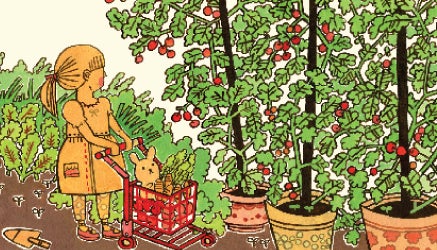Community Garden Primer

Turns out, gardening with a group may be one of the best ways to green your thumb. Community gardenswhich these days number around 18,000 throughout the U.S. and Canadaaren’t just an urbanite’s best bet for growing his or her own veggies, they’re also a wellspring of collective wisdom.
When Elanor Starmer, a blogger for the Ethicurean, joined a community garden in Albany, Calif., she was new to the region and its quirky microclimate. “Other gardeners there would see me hacking away in the dirt and say, ‘Hey, why don’t you come see what we’re doing over here?'” she recalls.
Liz Falk, codirector and cofounder of Common Good City Farm, formerly the 7th Street Garden, in Washington, cherishes the intergenerational exchanges: “The older folks will say to children who are curious, “Oh, this is how I used to grow this on my farm,” or “This is what we used to eat when I was a kid.’ And the children respond with their never-ending energy at the chance to plant seeds and get their hands dirty.”
Members of community gardens generally tend 100- to 1,000-square-foot individual plots and take home what they coax from the soil. At Common Good City Farm, anyone can pull on a pair of gardening gloves and dig in, but the fruits of everyone’s labor go to low-income D.C. residents, who trade work for produce as well as the opportunity to receive horticulture and nutrition education.
If your community doesn’t already support a garden, you might consider starting one, but be prepared for a commitment of time and effort. Falk says it’s worth it, though: “Seeing the looks on people’s faces when they pull their first carrot from the ground or see their plants sprout is magical.”
Since April is National Gardening Month and summer plantings are getting under way, the time couldn’t be more ripe to join up with a garden in your neighborhood. Whether you’re eager to feel more connected to your community or to help reduce food insecurity for others, or you’re just itching to get your fingers in soil, you’ll reap far more than the produce you sow.
Visit communitygarden.org to find a garden in your area or to learn how to start your own.